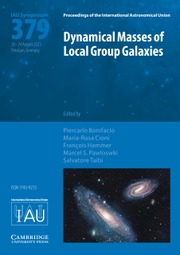No CrossRef data available.
Article contents
Data pre-extraction for better classification of galaxy mergers
Published online by Cambridge University Press: 01 August 2025
Abstract
Galaxy mergers are central to our current understanding of the universe. These events are known to change the morphologies of the merging galaxies, accompanied by changes to physical processes Galaxy mergers are rare events and to better study them we need larger, statistical samples.
Greater use of machine learning and artificial intelligence has seen galaxy mergers become a target for these techniques. Recently, application of these techniques has gone from proof of concept to using machine learning galaxy merger catalogues for science.
In this proceedings, we will examine how extraction of morphological parameters by traditional methods can be used to aid neural networks in classification of galaxy mergers. We will see how current networks may not be extracting all the information from imaging data. We will also discuss how samples of rare objects can be contaminated and the impact this has on our science. This contribution is based on Pearson et al. (2022).
Information
- Type
- Poster Paper
- Information
- Proceedings of the International Astronomical Union , Volume 19 , Symposium S368: Machine Learning in Astronomy: Possibilities and Pitfalls , August 2023 , pp. 119 - 121
- Copyright
- © The Author(s), 2025. Published by Cambridge University Press on behalf of International Astronomical Union


